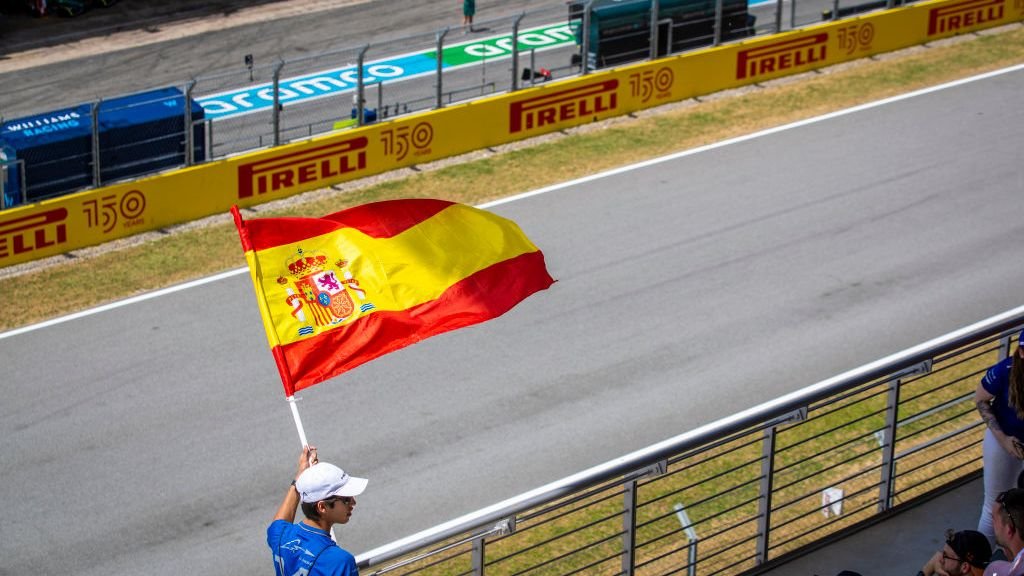The organizers of the upcoming Spanish Grand Prix, set to take place in Madrid, have officially revealed the finalized design of the racing circuit, which boasts a total of 22 turns. Among these, a particularly notable feature is the “Monumental” corner, characterized by its significant banking angle. This new track is scheduled to be part of the Formula 1 calendar starting next year and will primarily utilize public roads surrounding the IFEMA exhibition center in the heart of Madrid.
During a press event held at the venue, the circuit’s layout was unveiled along with the announcement of Carlos Sainz as the race’s official ambassador. The circuit itself spans approximately 3.35 miles (or 5.4 kilometers) and begins with a chicane that leads into a high-speed right turn. This initial section is designed to allow cars to reach impressive speeds of up to 211 mph (340 km/h), followed by a slower Turn 5, which presents a challenging incline of 8%.
The track’s design includes an intriguing area dubbed “The Bunker.” This segment runs adjacent to historic Spanish Civil War forts, La Mata Espesa, and features a downward slope of 5%. The designers anticipate that this part of the circuit will present a significant challenge for drivers, making it one of the most intricate sections on the track.
In an effort to manage speed and enhance safety, the designers have incorporated a wider chicane that leads into the Monumental corner. This remarkable turn stretches over 500 meters and has a banking angle of 24%, allowing drivers to gain momentum as they navigate through this section. Spectators will have an excellent view of this corner from a grandstand designed to accommodate around 45,000 fans, making it a focal point of the race.
The Monumental corner is being likened to a bullring, capturing the spirit of Spain’s rich cultural heritage. Drivers will spend approximately six seconds maneuvering through this turn before accelerating onto a straight section, which provides another opportunity for overtaking at the subsequent 90-degree left turn, known as Turn 13.
As the circuit progresses, drivers will encounter a series of high-speed corners that will test their skills and precision. The final sector of the track features a number of slower turns, concluding with two right-handers that exceed 90 degrees. These turns will lead back onto the main straight, which is the widest section of the circuit, measuring 49 feet (15 meters) across. This width is significant, especially compared to the narrower sections of the track, which typically measure 39 feet (12 meters).
Currently, Spain has agreements in place for two races in 2026, which includes the final year of the contract for the Circuit de Barcelona-Catalunya. This means that there is still potential for the traditional venue of the Spanish Grand Prix to remain on the calendar alongside the new Madrid circuit.
With its unique features and challenging layout, the new Madrid circuit is poised to become a thrilling addition to the Formula 1 calendar. The incorporation of public roads into the design not only adds an urban flair but also allows for an exciting race that is accessible to a wider audience. The anticipation surrounding the inaugural race is already building, and fans are eager to see how the drivers will tackle the intricate twists and turns of this new venue.
The inclusion of the Monumental corner and other challenging sections of the track highlights the organizers’ commitment to creating an exciting and competitive atmosphere for both drivers and fans. The design of the circuit takes into account the need for overtaking opportunities while maintaining the thrill of high-speed racing. As teams prepare for the upcoming season, the focus will undoubtedly be on how well they can adapt to the unique challenges presented by this new layout.
Overall, the new Spanish Grand Prix circuit in Madrid represents a significant evolution in the world of Formula 1 racing. By blending modern design with the historical context of the location, the organizers have crafted a track that promises to deliver exhilarating racing experiences. As the date for the first race approaches, both the motorsport community and fans are eagerly awaiting what is sure to be a landmark event in the 2024 racing season.
The excitement surrounding the Madrid venue is palpable, with expectations high for thrilling races and unforgettable moments on the track. The combination of speed, skill, and strategic racing will be put to the test as drivers navigate the twists and turns of this innovative circuit. As preparations ramp up, teams will be focused on fine-tuning their cars to meet the demands of the new layout.
In conclusion, the unveiling of the circuit layout for the new Spanish Grand Prix in Madrid marks a significant milestone in the world of motorsport. With its unique features, including the Monumental corner and the challenging sections that lie ahead, the circuit is set to provide an exciting platform for Formula 1 racing. As the countdown to the first race begins, fans can look forward to witnessing the skill and determination of their favorite drivers as they take on this new challenge in the heart of Spain.
